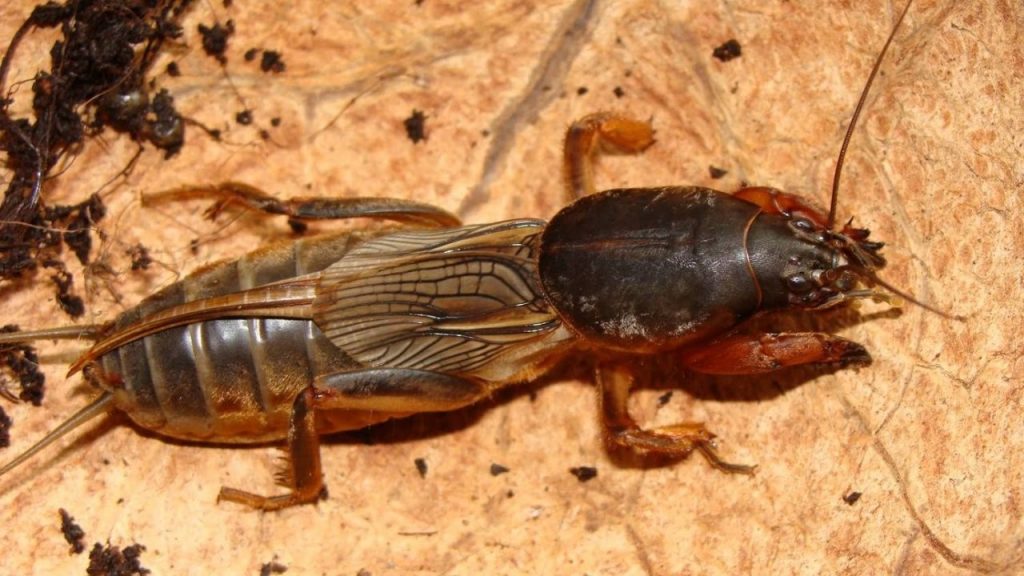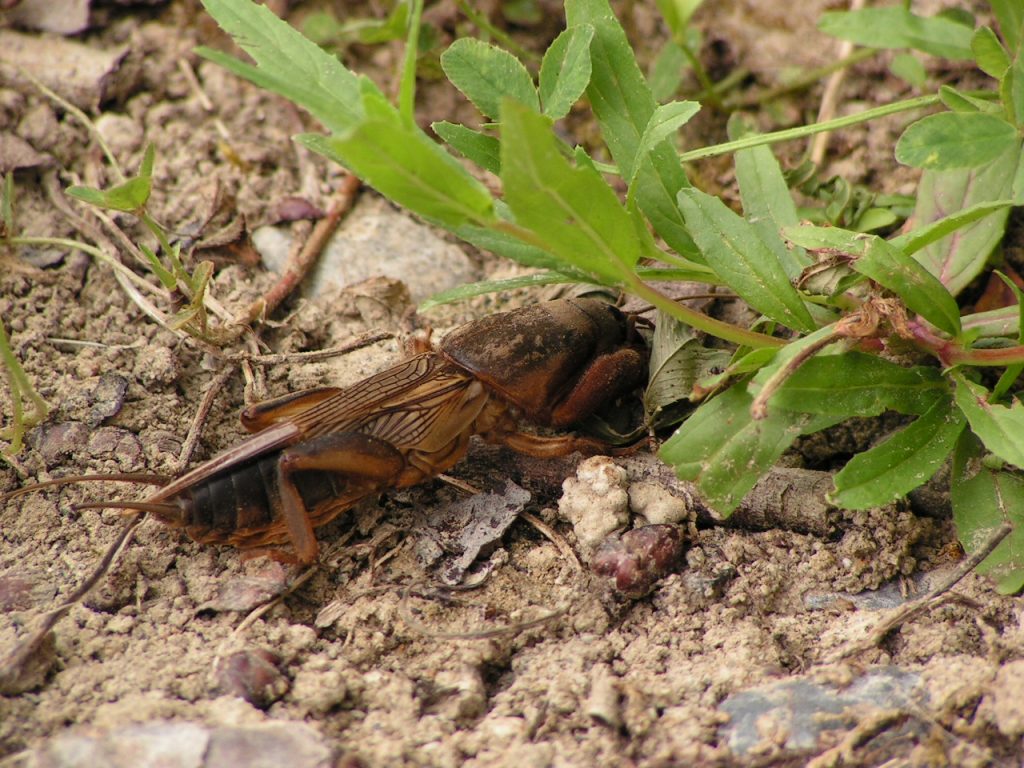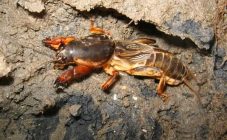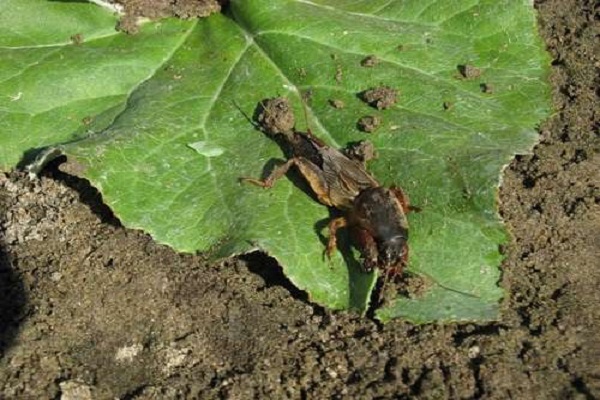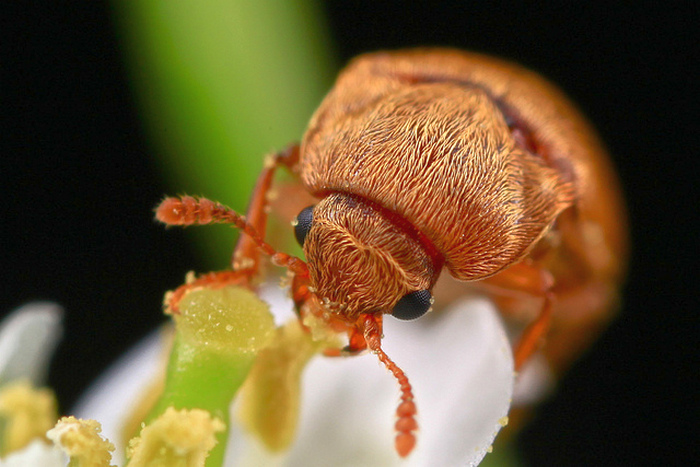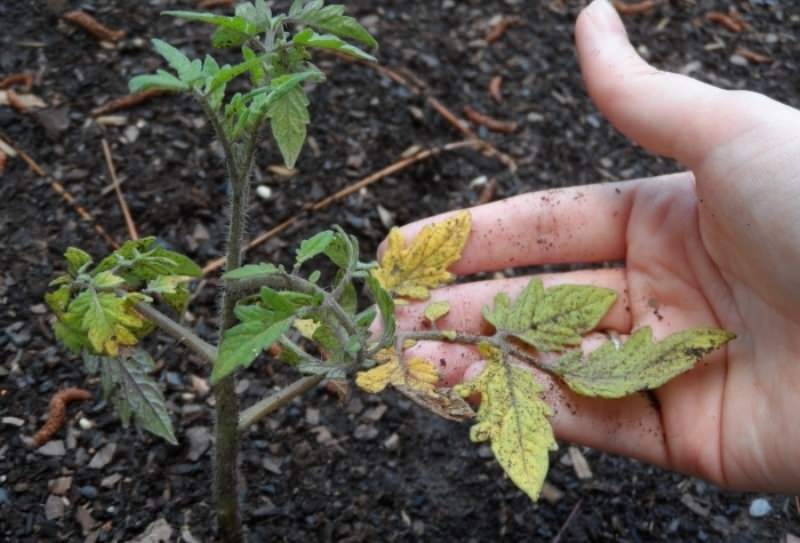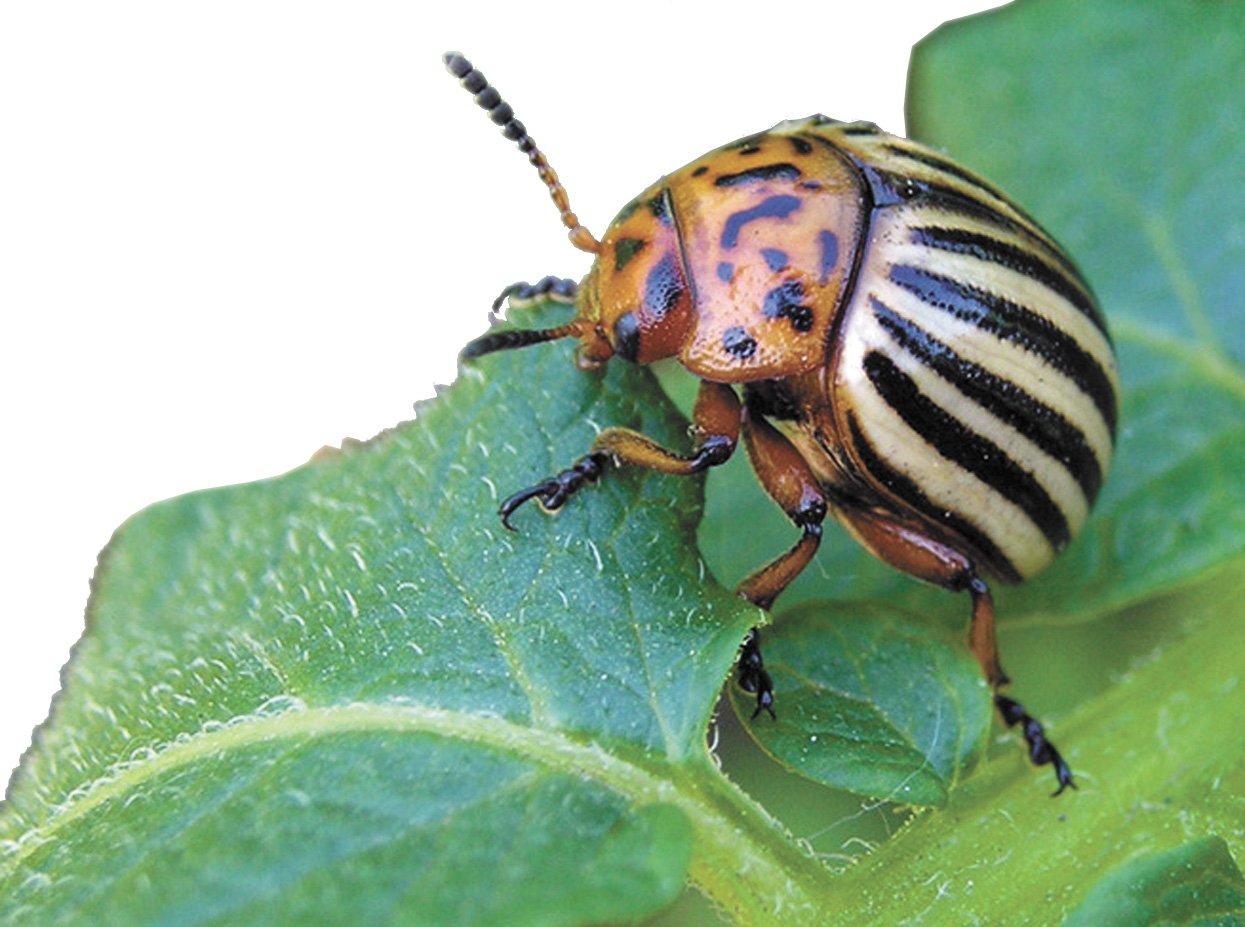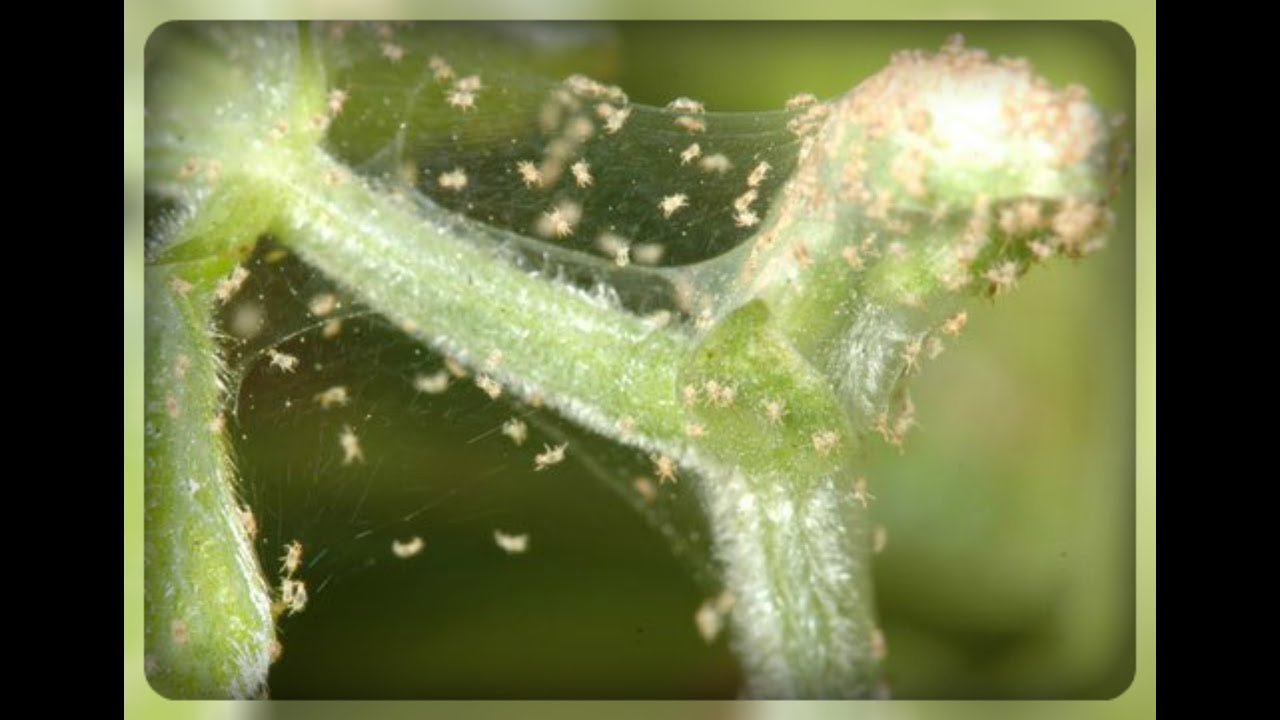Content:
Medvedka is an insect, acquaintance with which promises a lot of trouble in the garden. The omnivorous beetle will quickly prove itself. The pest develops vigorous activity on the site, combining the agility of the mole with the gluttony of the locust.
Description and variety of species
It is difficult to confuse this insect with anyone, and many gardeners know firsthand what a bear looks like, due to the wide distribution of the pest beetle in gardens and summer cottages.
In nature, there are about 100-110 species of representatives of the Medvedok family (from Lat. Gryllotalpidae), their lifestyle and external data are very similar.
The most common types are:
- Medvedka ordinary - lives in large numbers in the Western and Central parts of the European continent.
- Ten-legged bear - common in North America.
- African or Eastern Medvedka - lives in the territories of North Africa and Southeast Eurasia, in South America.
- Far Eastern Medvedka - common in the Far East and China.
The common bear has many popular names: ground crayfish, ground louse, cabbage, mole cricket.
The pest belongs to large burrowing insects. The body length of an adult reaches up to 7.5-8 cm. The head protrudes slightly from the thoracic part, on its sides there are well-visible black faceted bead eyes. Slightly lower in the center is a pair of thin mustaches. Finally, in the lower part of the head, there is a gnawing mouth apparatus with massive jaws and protruding thick paired tentacles.
The head passes into a very rigid thickened sternum, from the sides of which the front modified large paws-pincers extend. The dense cover of the front part of the body helps the bear to push the ground when digging.
Gnarled thick pincers' blades and a hard shell give the insect a distant resemblance to crustaceans.
The chitinous carapace merges with an elongated (3.5-4 cm), up to 1-1.2 cm thick abdomen. At the junction of the sternum and body - a pair of shortened legs, at some distance, closer to the middle of the abdomen - a pair of hind legs resembling the hind limbs of a cricket or a grasshopper.
On the back of the mole cricket there are 2 pairs of wings, which the insect uses for flights to new territories and during the mating season.
The wings of the bear are not the same in size and structure. The front ones play the role of rigid protective elytra, and the rear ones are long and wide, designed for flight. At rest, the flight wings are folded to a minimum and pressed against the body.
In continuation of the abdomen there are two elongated whiskers - cerci.
The body of the insect is brownish in color, the abdomen and legs are covered with short reddish-brownish hairs. The general impression of the bear beetle is extremely hostile.
Habitat and lifestyle of the beetle
Bears do not live in areas of the Far North, deserts and permafrost conditions. All other soil types are subject to the burrowing insect. The beetle especially loves to be found in loose and humid lands rich in organic matter, along the banks of water bodies.
Most of the life of a mole cricket takes place underground.The insect actively digs numerous passages in the surface layers of the soil (no more than 10-20 cm below the surface), eating all plant food on its way. In the dark, bears climb to the surface and migrate to new territories by air, land or water.
What does the bear eat
The lion's share of what the bear eats is plant food:
- Plant roots, seeds, tubers, young shoots.
- Seedlings of melons and gourds, seedlings of sunflower, tobacco, poppy, legumes, radish.
- Young potato tubers, carrots, beets.
- Seedlings of tomatoes and peppers, crops of cereals.
- Berries and fruits, if you can reach it.
The bear is especially harmful to the planting of cabbage, one of the names of the beetle is due to this addiction - cabbage.
The beetle does not disdain nutritious finds: beetle larvae, pupae, earthworms, dead and live small insects, caterpillars.
Gluttonous bears not only harm plantings, but also eat other pests of vegetable and cereal crops (for example, May beetle larvae). The many underground passages of the insect contribute to better air permeability of the soil.
The only thing that the bear in the garden does not like is the specific rich aroma of marigolds and a bed of garlic.
Reproduction
Cabbage can reach sexual maturity in the 2nd year of life. During wintering (hibernation), insects are able to go into the ground up to 2 m, but usually the depth of the passages does not exceed 20-35 cm.
Mating takes place in underground tunnels with the arrival of spring heat, the offspring appears in June. Visually, you can determine how the bear began to multiply on the site along the bulging rounded earthen nests above the ground.
Kapustians dig a complex system of branched passages on the approaches to the nesting chamber. The chamber itself resembles an egg, insects carefully seal the walls of the nest. When the time comes, the bear lays 200 to 600 eggs. The female remains near the nest, protecting it from enemies, and maintains the optimal temperature and humidity regime.
After 2 weeks, beetle nymphs begin to hatch from small (up to 2 mm) gray eggs. The larvae are practically white, without wings and pronounced sexual characteristics. Young growth stays together in the first month of life, and then creeps in different directions.
An exhausted female bear dies a few weeks after hatching.
In order to become an adult, the cabbage larva must survive 8-10 molts-metamorphoses. In winter, the activity of the insect and its larvae is reduced to zero - the bears fall into suspended animation and remain in this state until the soil warms up to + 10-15 ° C.
Misconceptions and truths about the bear
- Medvedka looks very frightening from a picture or photo. Therefore, some people have doubts: is the bear dangerous for humans?
In fact, the insect is a great danger exclusively for the garden and vegetable garden. The invasion of cabbage can leave the gardener without a flower garden, harvesting vegetables, fruit and berry crops.
- Is it possible to safely take a beetle with your bare hands, whether the bear bites or not?
This thought (about a bite) is prompted by powerful front pincers, but the insect cannot pierce the human skin with them. The most you can get are unpleasant pinches and scratches. The mole cricket is not a poisonous insect.
- The question is, does the bear fly or not? The wings speak for themselves though.
The bear flies, but not like a butterfly or a locust. She makes flights very reluctantly, in warm weather, over short distances. Up to 90% of flights are about finding a mating partner. The insect is by nature a mole rat. It spends more than 2/3 of its life in the ground.
- Can the cabbage girls sing?
The mole cricket really chirps during the mating season, rubbing its wing against the wing, males make loud sounds that attract females.
How to get rid of
Medvedka is a pest that will have to be dealt with in all possible ways. The most effective method is prevention. It is always better to prevent the problem than to experience all the unpleasant consequences of the harmful activity of the insect.
Prevention:
- Manure and humus are a breeding ground for bears, they are regularly agitated, found pests and their larvae are destroyed. The manure is stored without contact with the soil, covering from above. It is advisable to replace cow and horse manure with chicken manure, in which the beetle does not reproduce.
- In autumn and spring, deep digging (plowing) of the earth is carried out. Insects and larvae will die in the frost.
- Planting seedlings in peat pots. Protects the tender roots of seedlings for a while.
- Treatment of seedling roots with special preparations (prestige, Aktara, etc.), introduction of preparations into the holes during planting.
- On the site and around the perimeter, they plant what the bear is afraid of: garlic, calendula, marigolds, parsley, cilantro, bird cherry, alder, conifers. The beetle does not tolerate the smell of these plants.
The cabbage has natural enemies in nature: birds (rooks, crows, starlings, etc.), ants, ground beetles, hedgehogs, lizards.
Folk ways:
- Installation of home-made wind turbines and ultrasonic scarers at the site.
- Digging into the system of passages of a smooth container. Having fallen into the jar on the run, the beetle will not be able to get out. For more attractiveness, it is recommended to pour a little water into the container or grease it with honey.
- The branches of conifers are laid out along the beds: pine, fir.
- When planting next to the seedlings, a piece of rotten fish is buried. The smell repels the pest.
- A small layer of onion husks is placed in the planting holes. Plants are watered 2-3 times a week with a strong infusion on onion husks (1 kg of husks per bucket of water, dilute 1/5).
- Spilling the burrows of the bear with a solution of laundry soap.
- Filling the underground passages of the insect with water and sunflower oil (1 teaspoon of oil and a bucket of water). Water pushes out of the burrow, and oil blocks the airways.
Traps:
- Manure - heaps of manure are spread over the site, then they are collected together with the settled bears.
- Light - put on the site at night a light source (lantern) above a container with liquid, from which a pest that has flown into the light cannot get out.
- Beer Loaf - Dig in a loaf with some beer at the site. Bears attracted by the smell will not be able to get out.
Special means:
- Phenaxin + - attracts female cabbage, the toxic substance is completely decomposed in the soil.
- Medvetox - destroys the bear and ants, decomposes in the soil.
- Boverin is a biological drug that causes the death of a bear.
- Medvecid is a poisoned bait that kills an insect within 3 hours.
Medvedka is a common pest, and the choice of means to combat it is very extensive. The gardener should proceed from the balance of harm that drugs can bring (if any) and the expected benefit from killing the beetle.
About the benefits of a bear
What is a bear - a garden pest that should be destroyed. But is there any use for a malicious beetle? It turns out that there is, and what kind:
- In China, the bear is actively purchased for the needs of pharmacology. Powders are made from the dried insect for the treatment of many serious diseases: tuberculosis of the skin, problems in the genitourinary system, edema, tumors, and other inflammatory processes in the body.
- In Asia, the bear is prepared in many ways and eaten as a delicacy.
In our country, far from Asian gourmets, the bear is used as bait for large fish: catfish, chub, carp, burbot.
